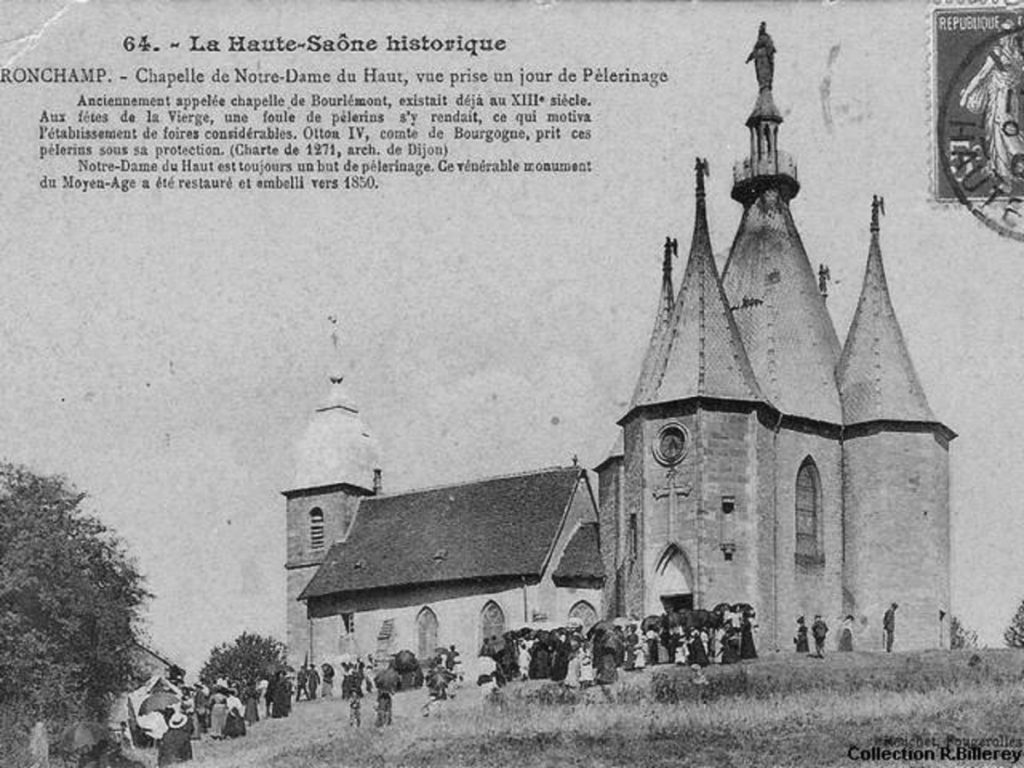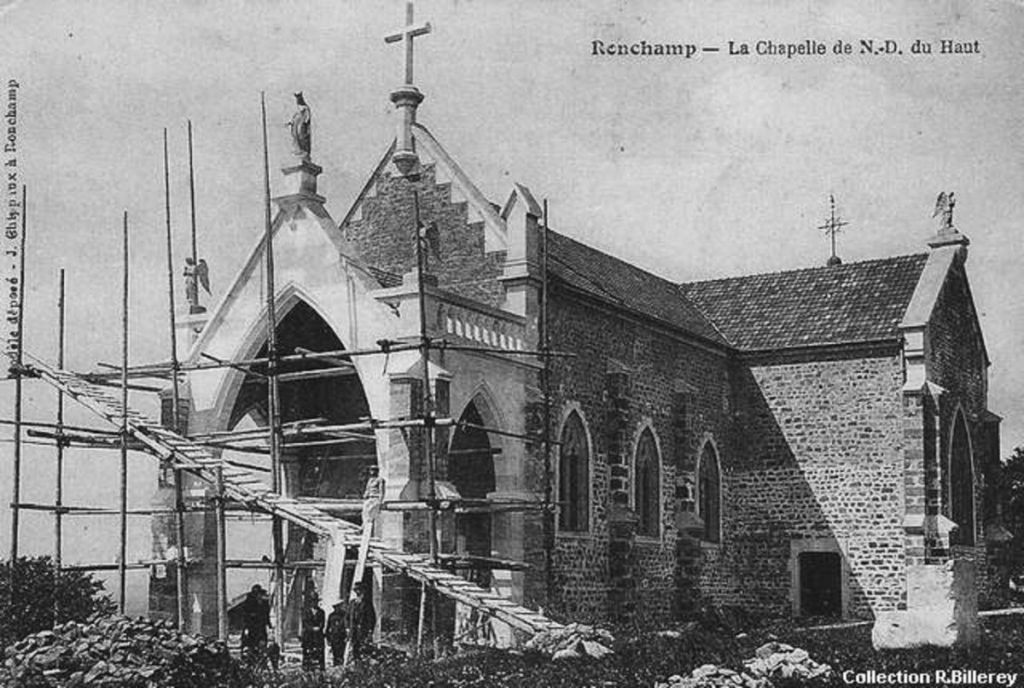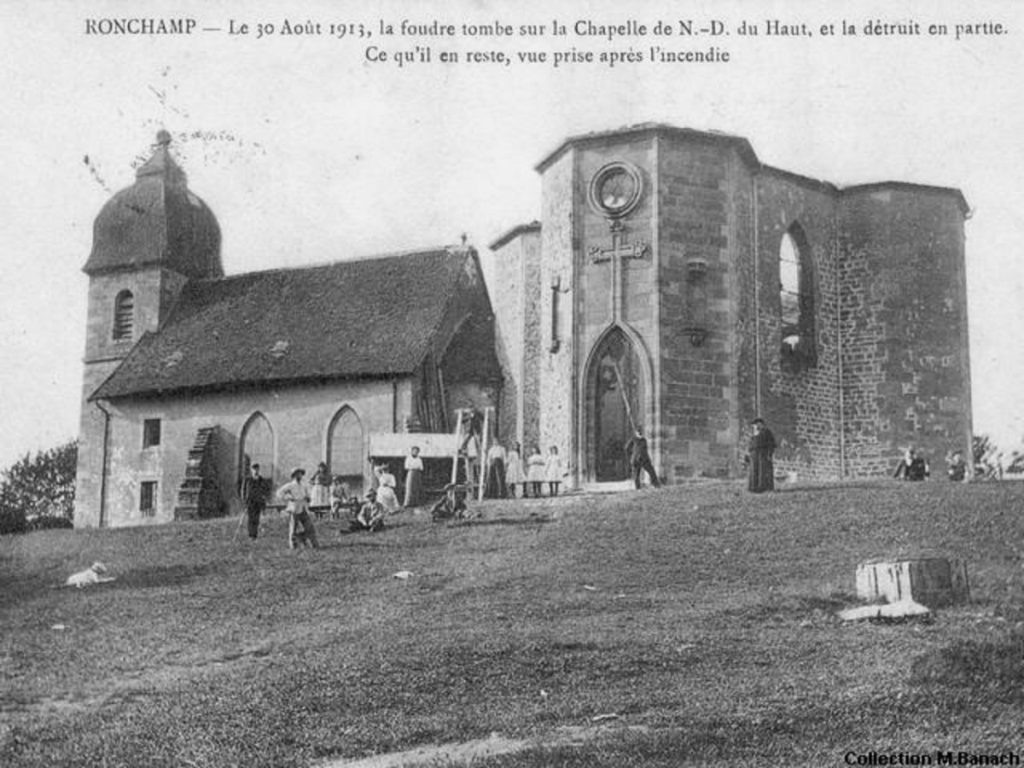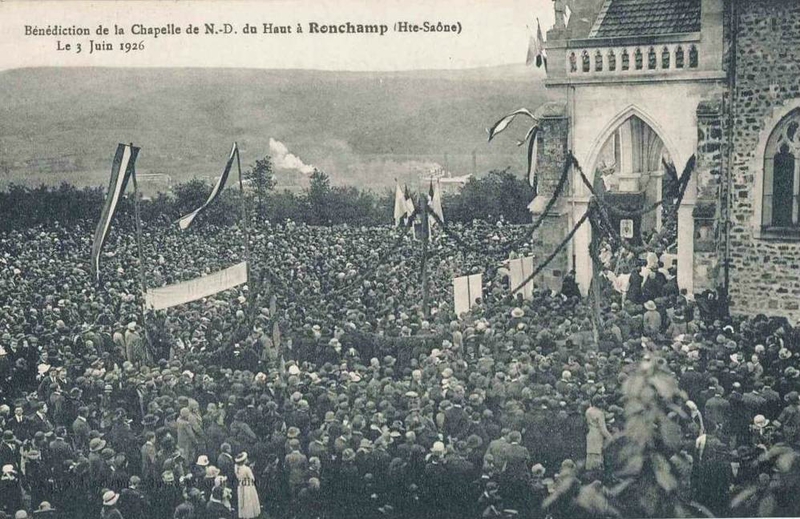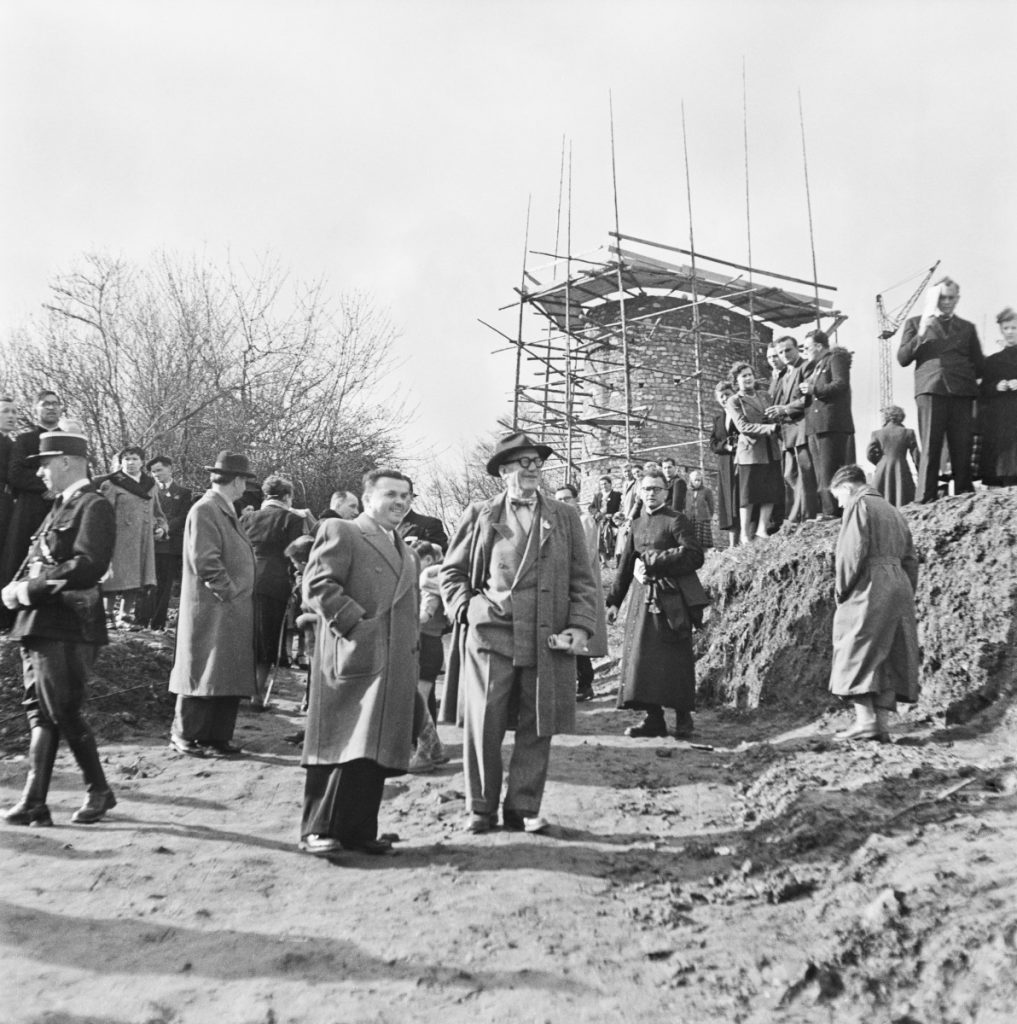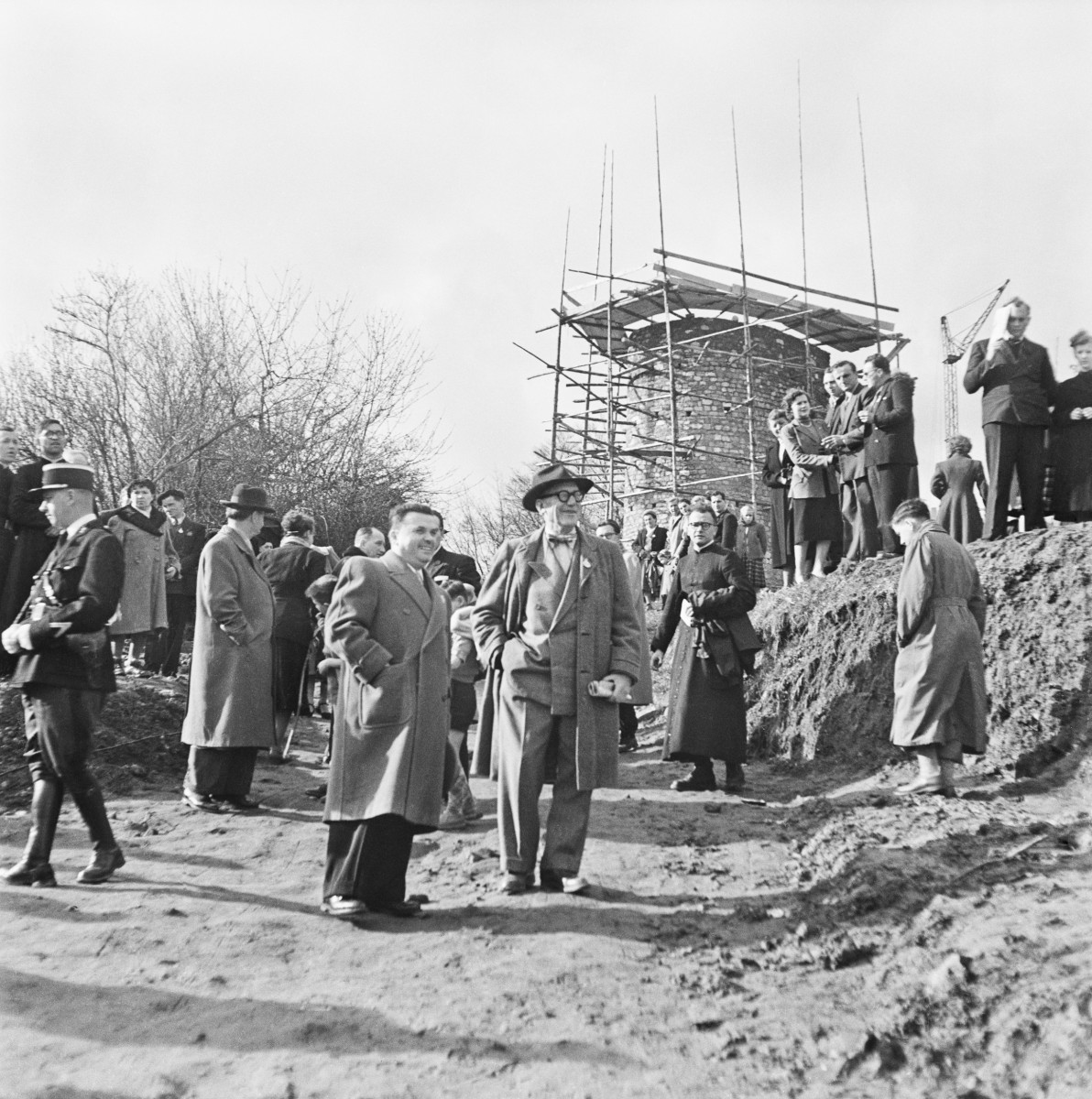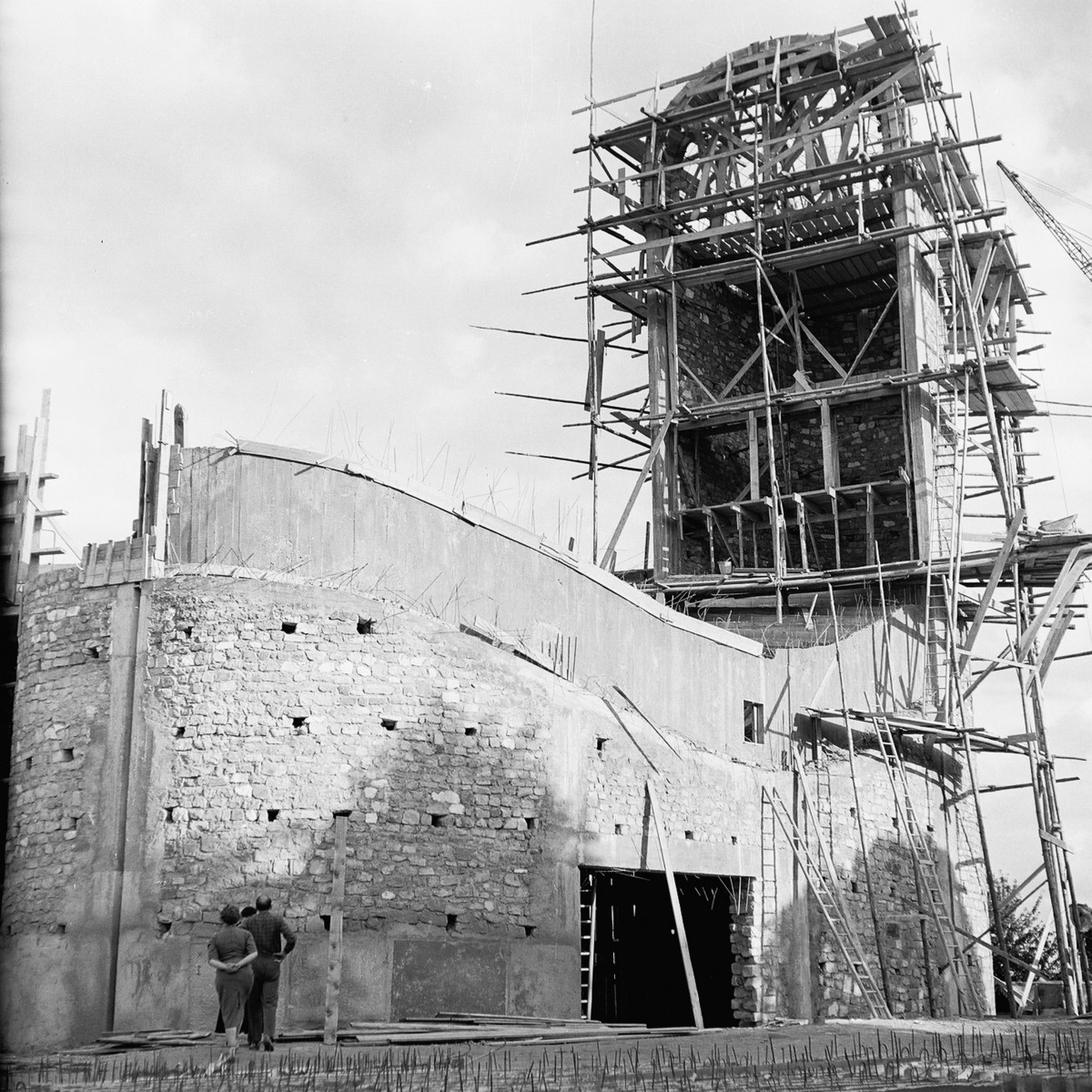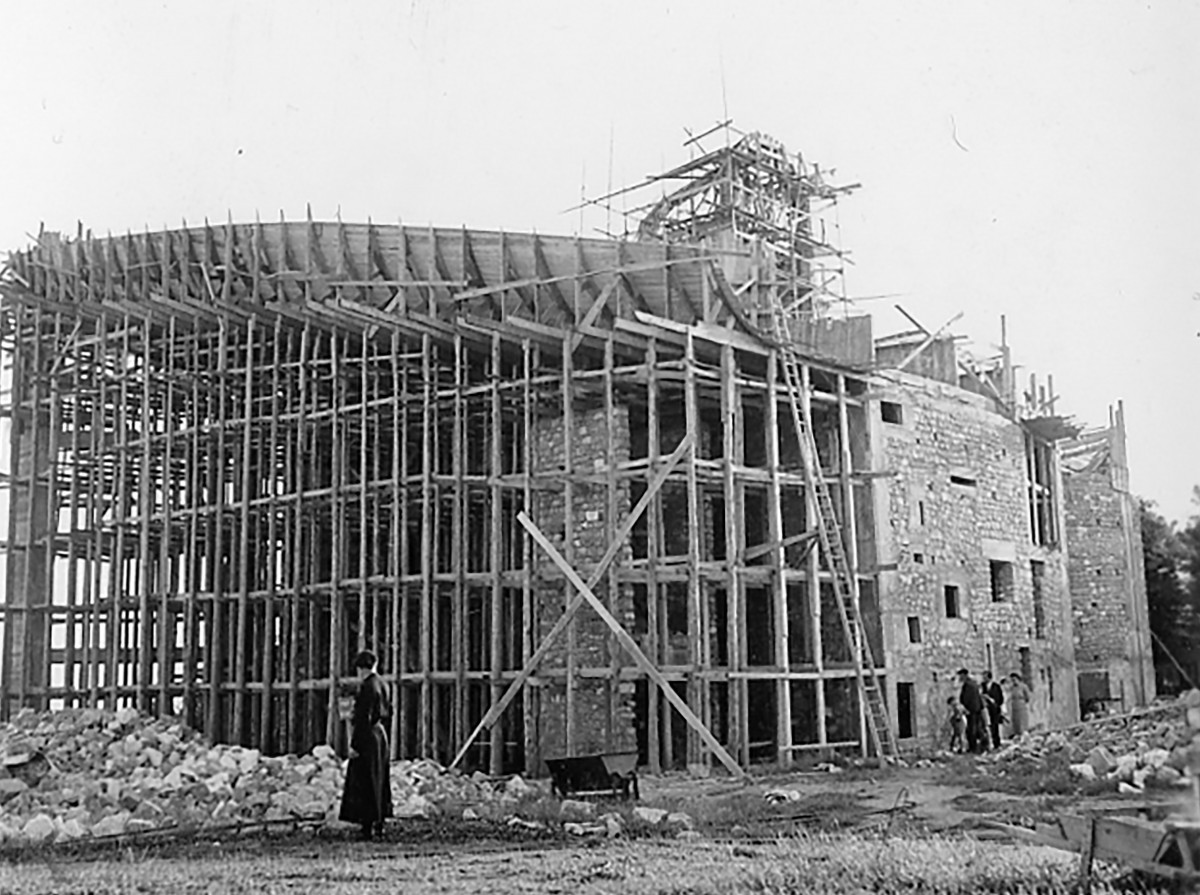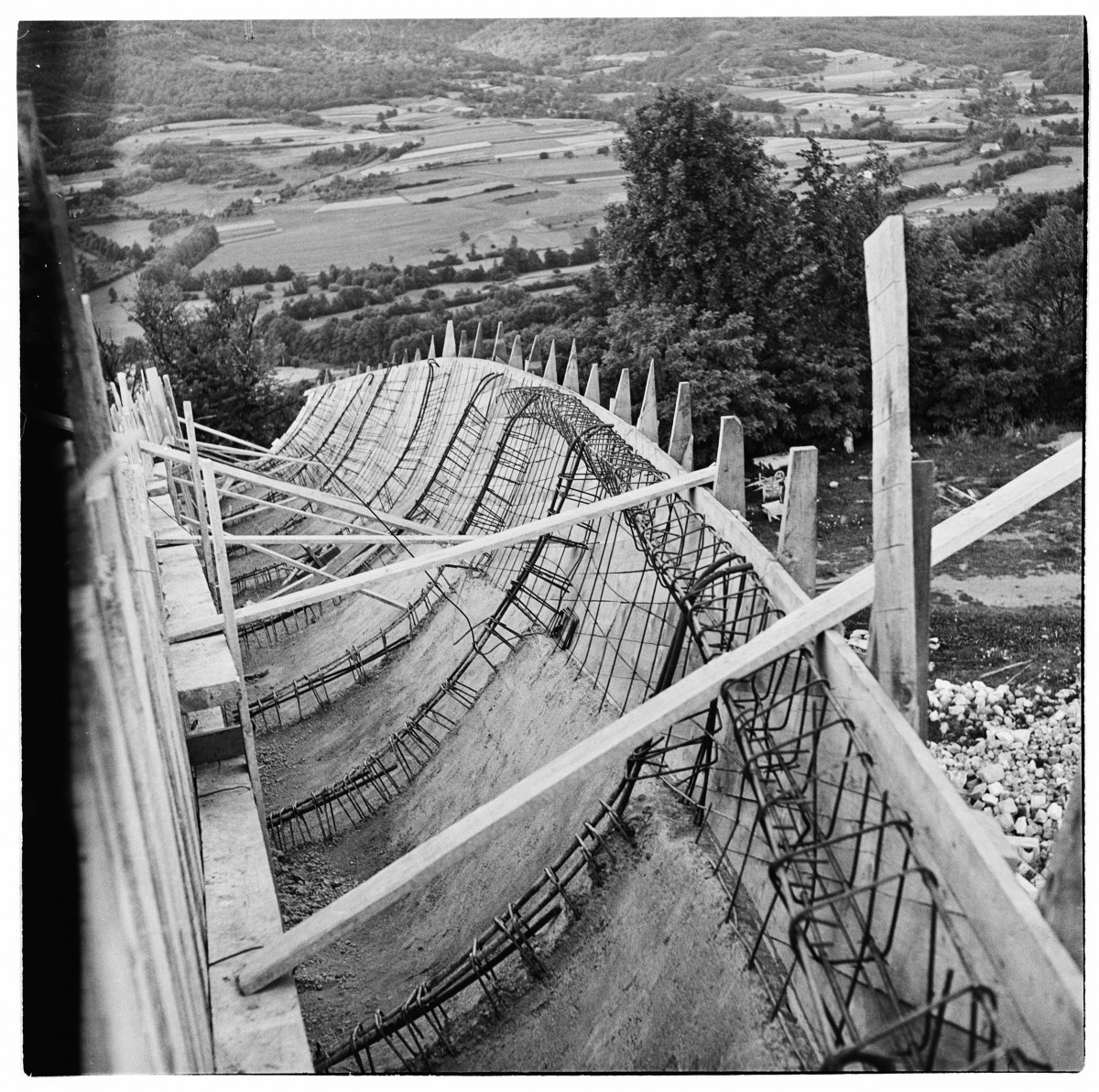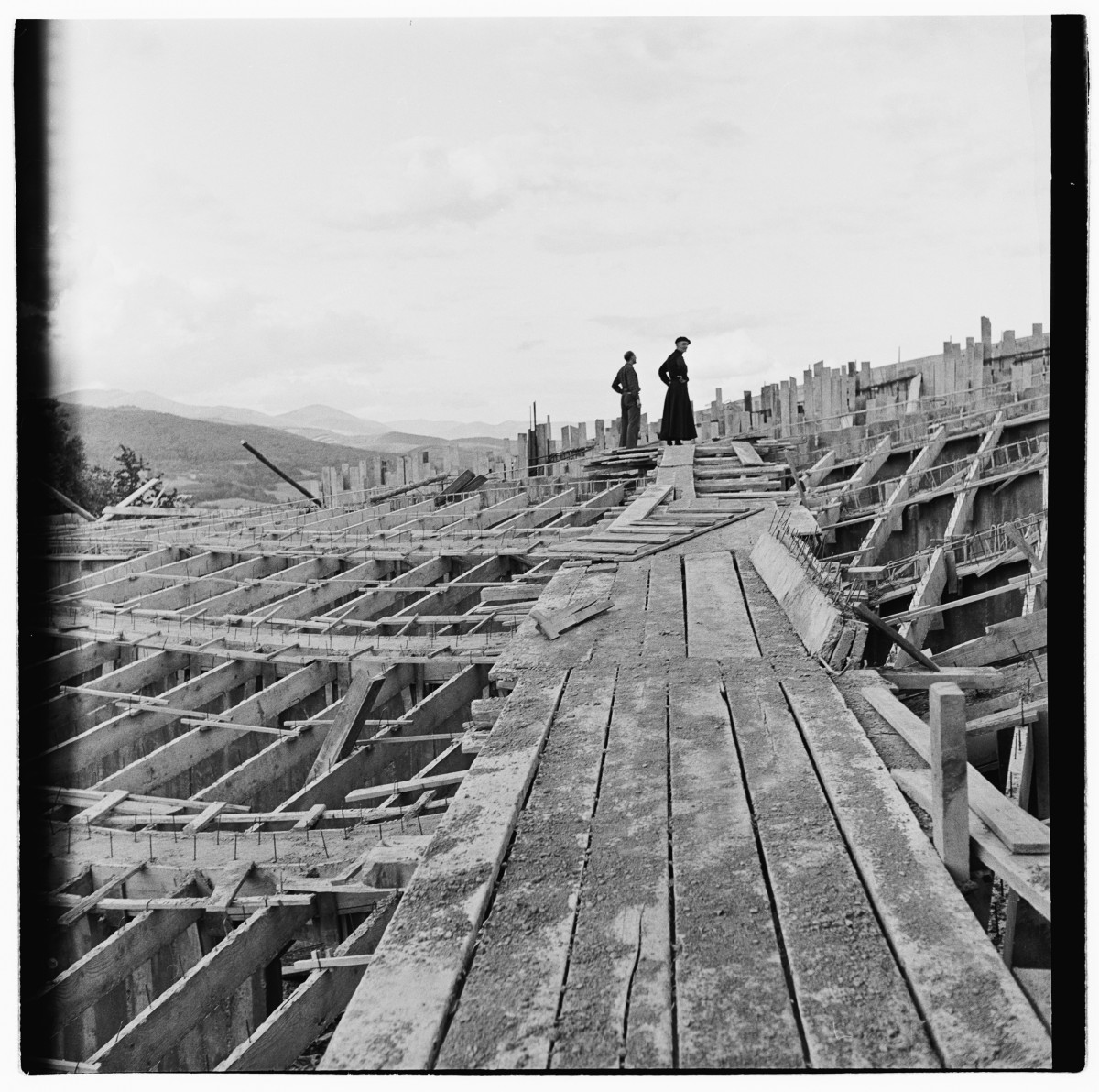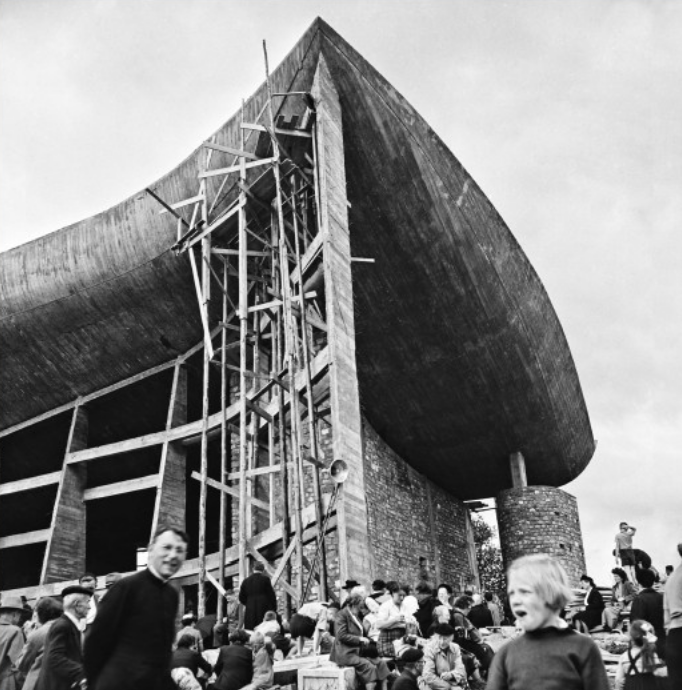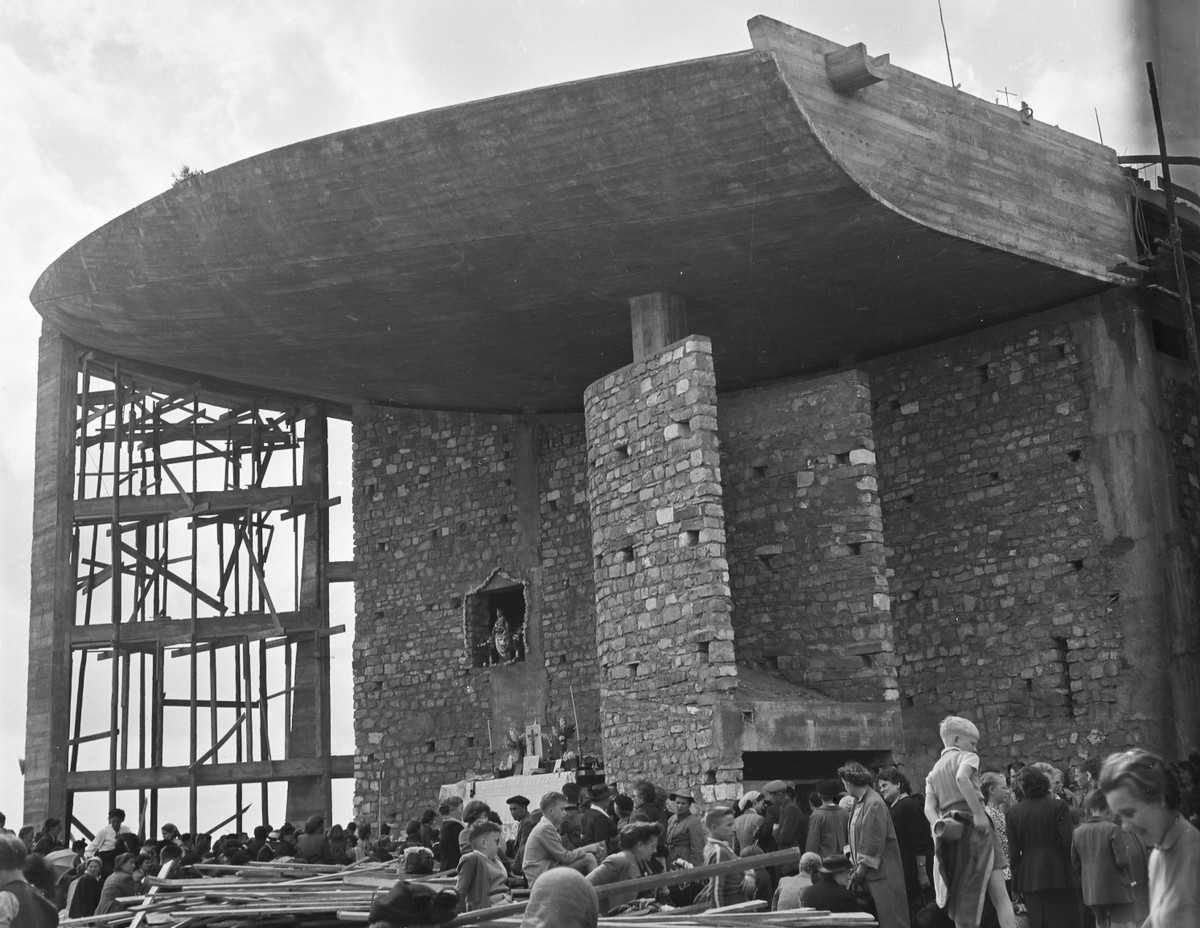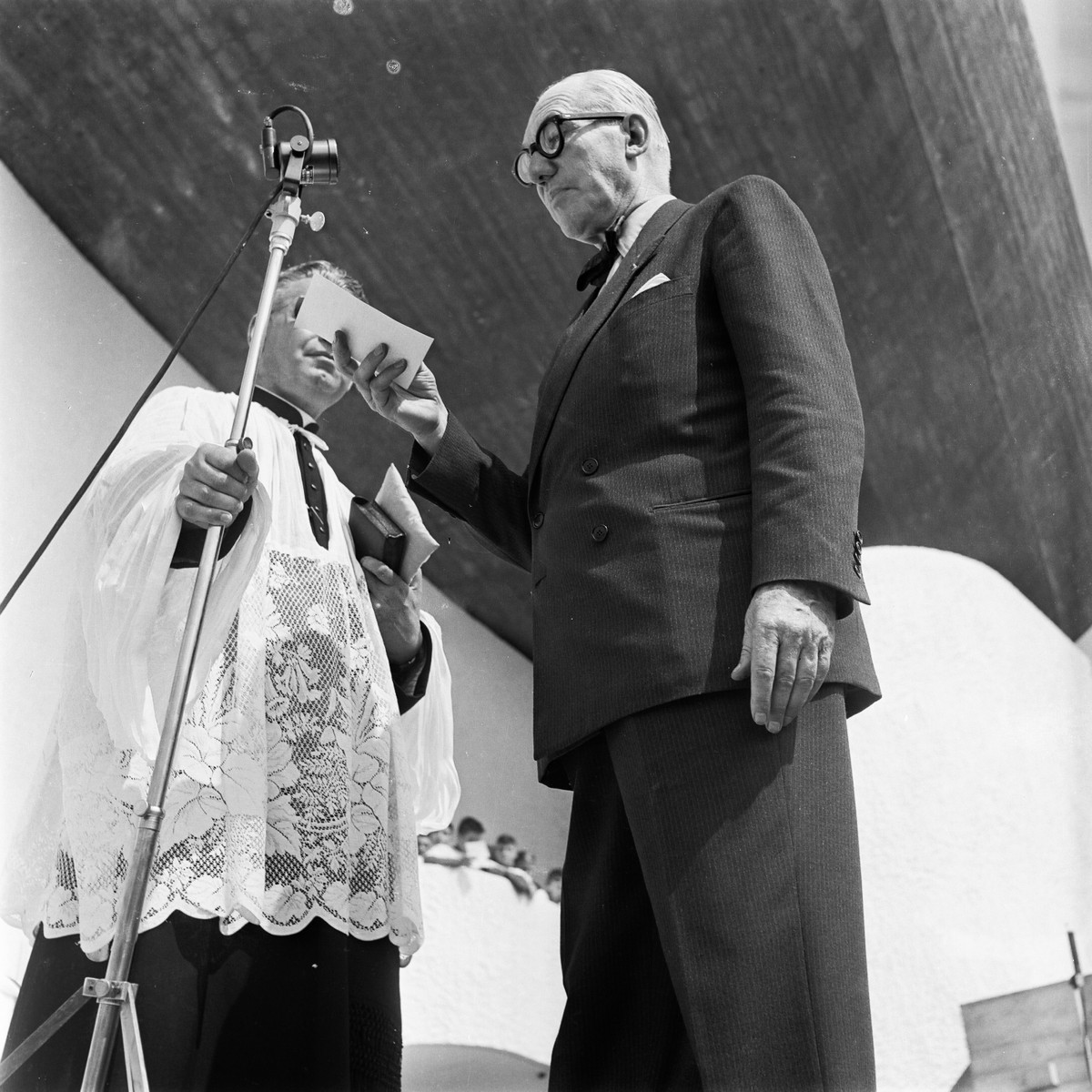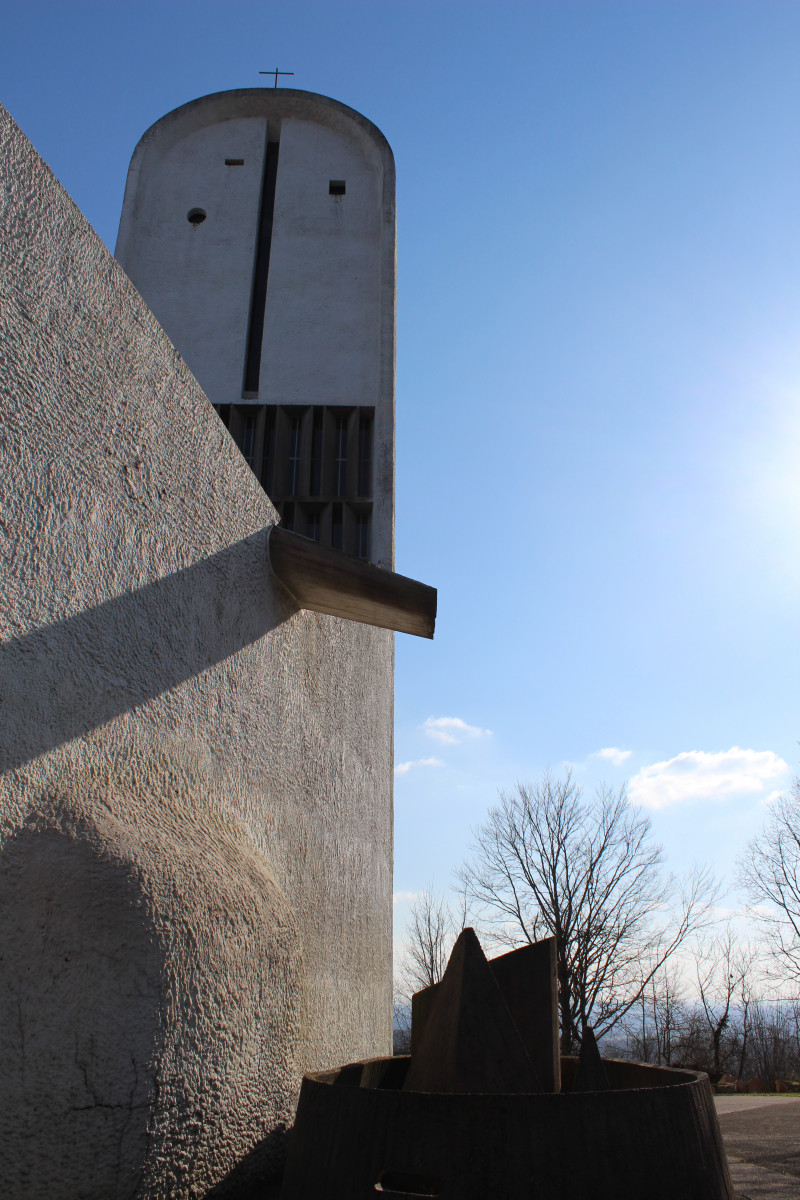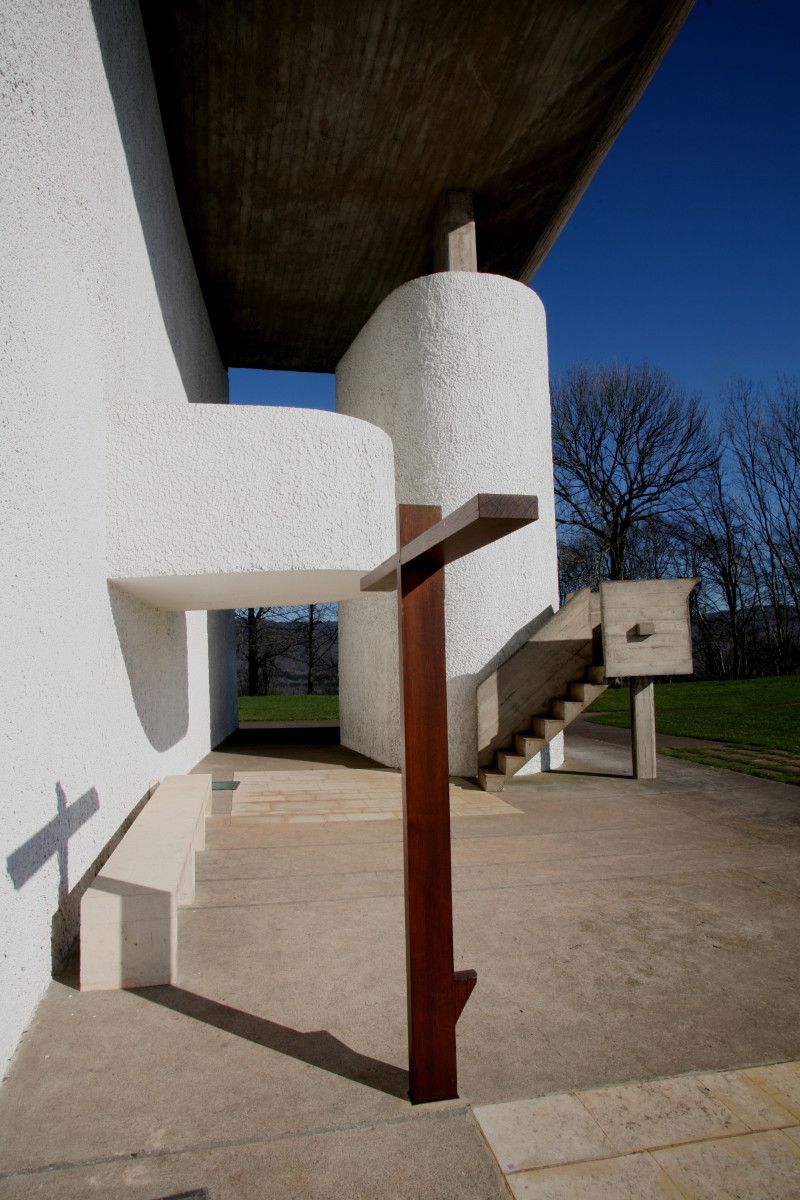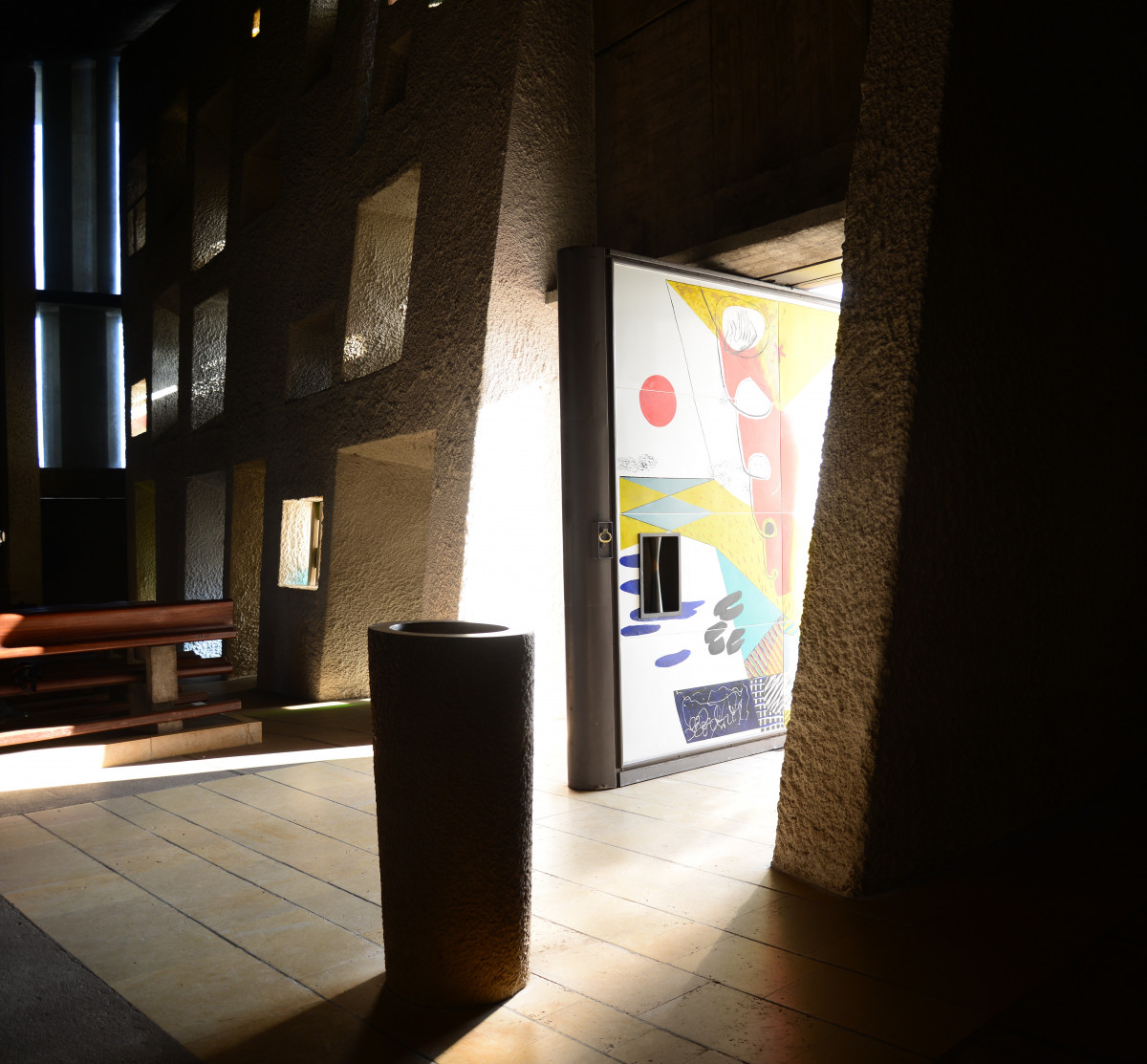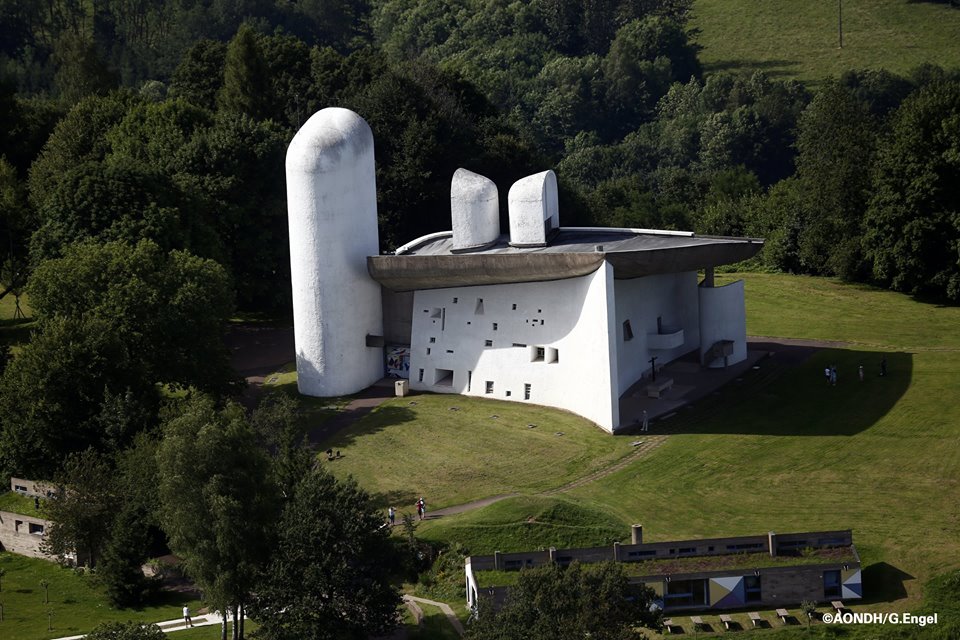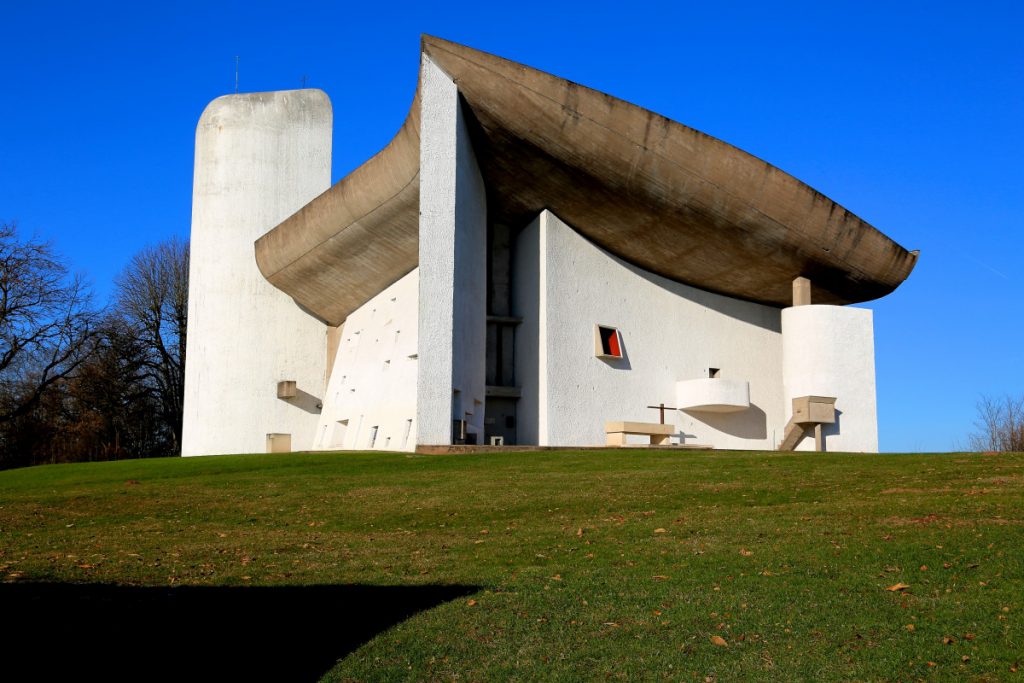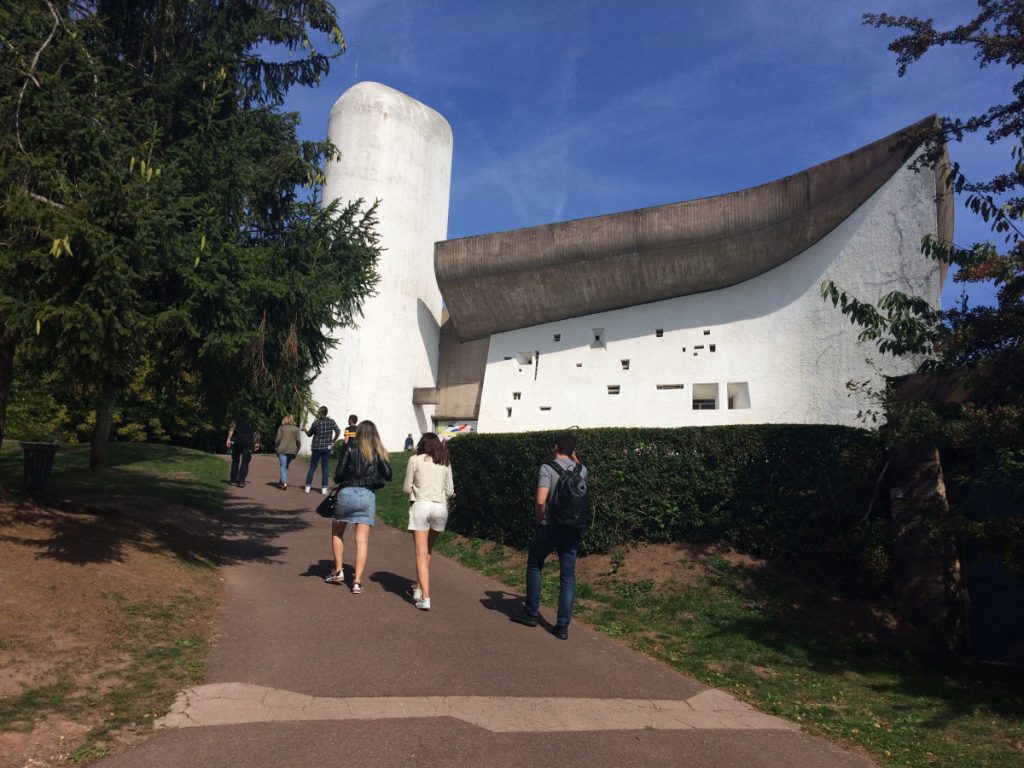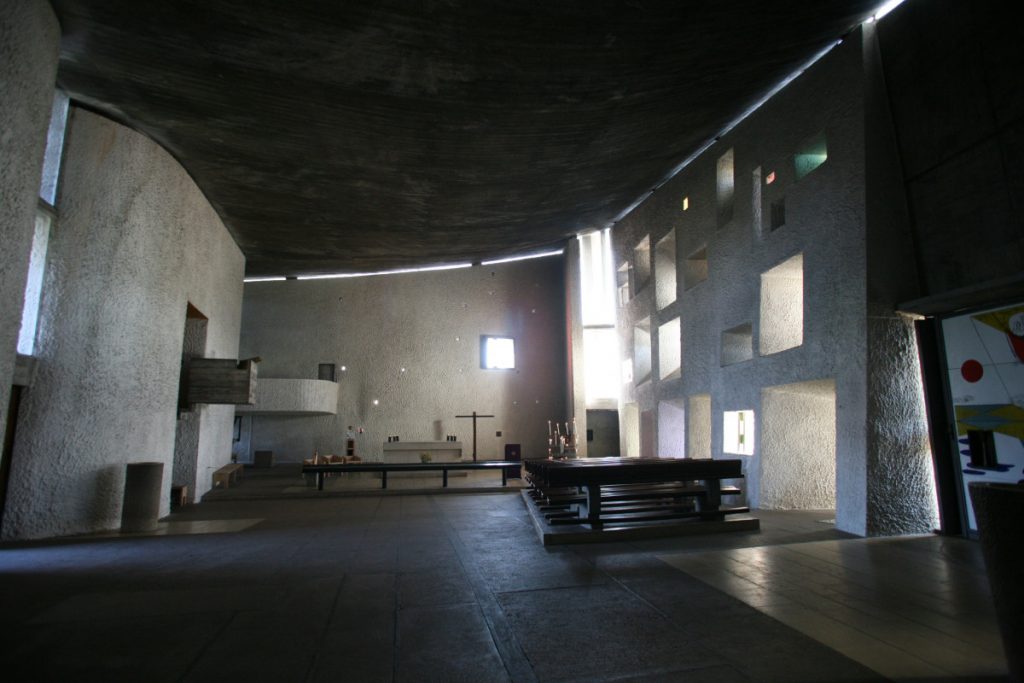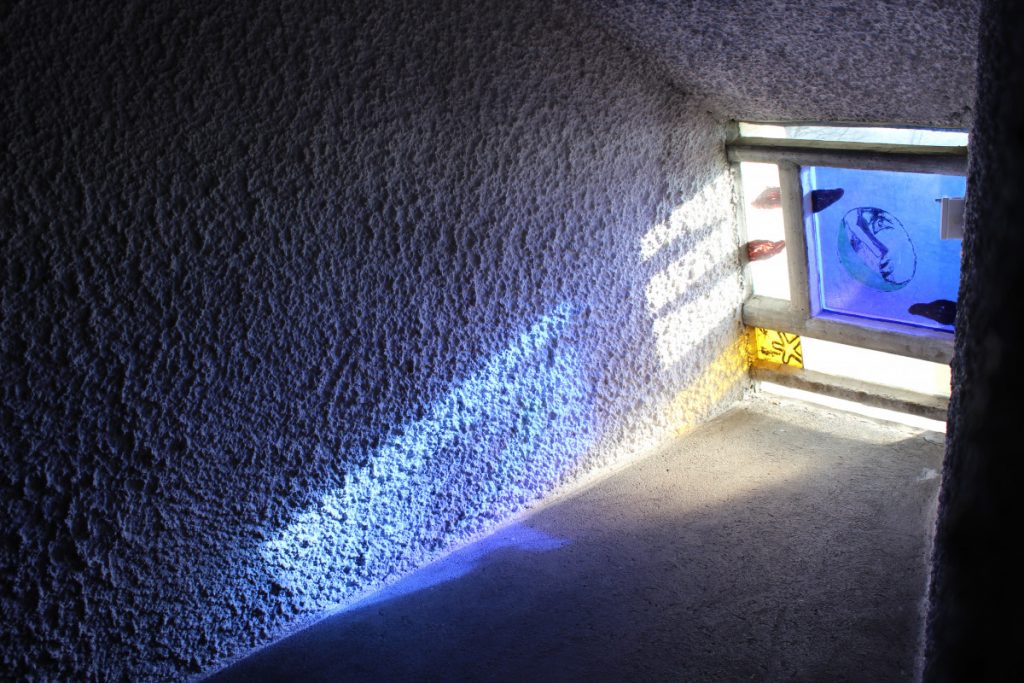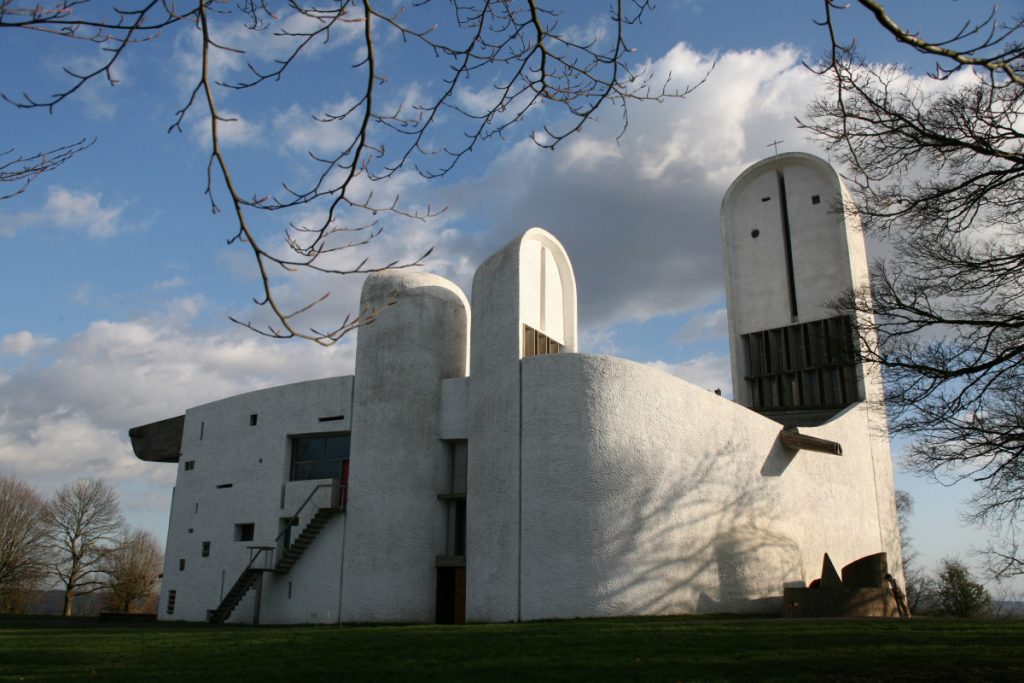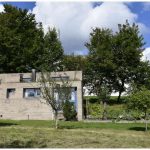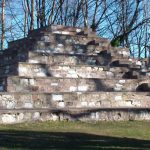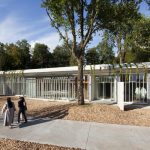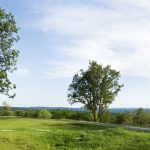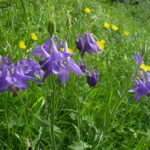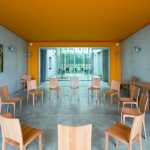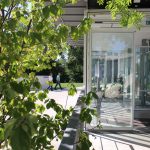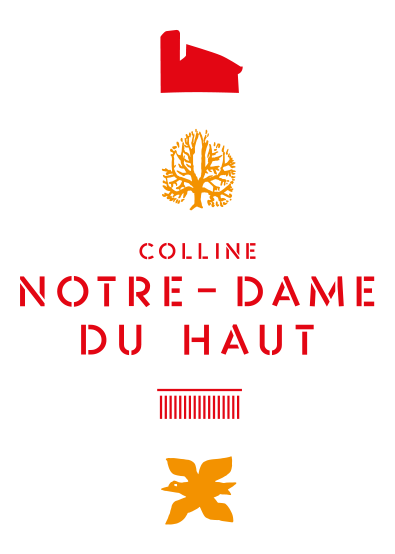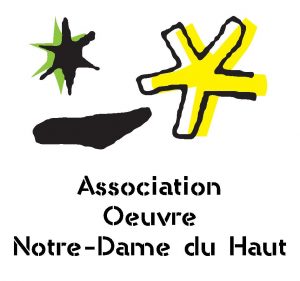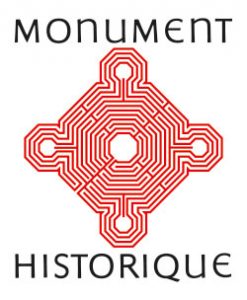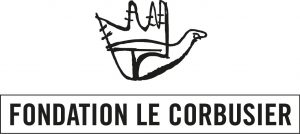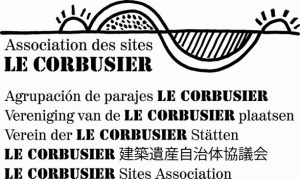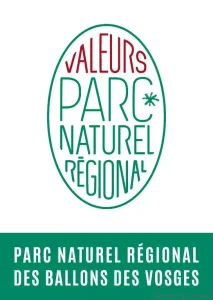THE INSIDE OF THE CHAPEL
“The inside is a sculpture in counter-relief. The four walls, the ceiling, the floor, everything plays a part in a disarming simplicity”, Le Corbusier wrote about the inside of the Chapel. The inside volume, without any decoration, is extremely innovative. The space has the shape of a funnel which opens towards the choir: the floor goes down, the vault goes up, and the walls spread apart towards the altar, which is the focus of attention. This place of unity is also a space divided by three secondary chapels which invite to peace and contemplation.
One of them is painted red. When lit by the morning light, it blazes. Is it the colour of blood, of Christ’s sacrifice? The architect never answered this question.
Le Corbusier’s effort makes us raise our gaze to Heaven, thanks to the light which sculpts spaces: the light wells radiate a divine light which fills the faithful of emotion. As to the vault, it looks as if it was raising, transported by light, a symbol of resurrection.
The statue of the Virgin and child standing in the eastern wall survived the war. In all likelihood, it dates back to the beginning of the 18th century AD and it used to be surrounded by the two wooden angels that you have seen in the Porterie.
Placed high up and against the light, it evokes the reference to the Book of Revelation: “a great sign appeared in Heaven: a woman clothed with the sun, with the moon beneath her feet and a crown of twelve stars on her head.” Le Corbusier had the idea of creating the star constellation with the holes of the scaffoldings in the stone wall. In the morning, the statue of the Virgin sheds its light on us, like some miraculous apparition.
The movements of the sun in the sky are taken into account to shape the interior space. In the afternoon, the southern wall, which is 3 meters large, filters the light and creates a subdued light that favours meditation. The chapels facing each other at the entrance light up and become dark in turns.

